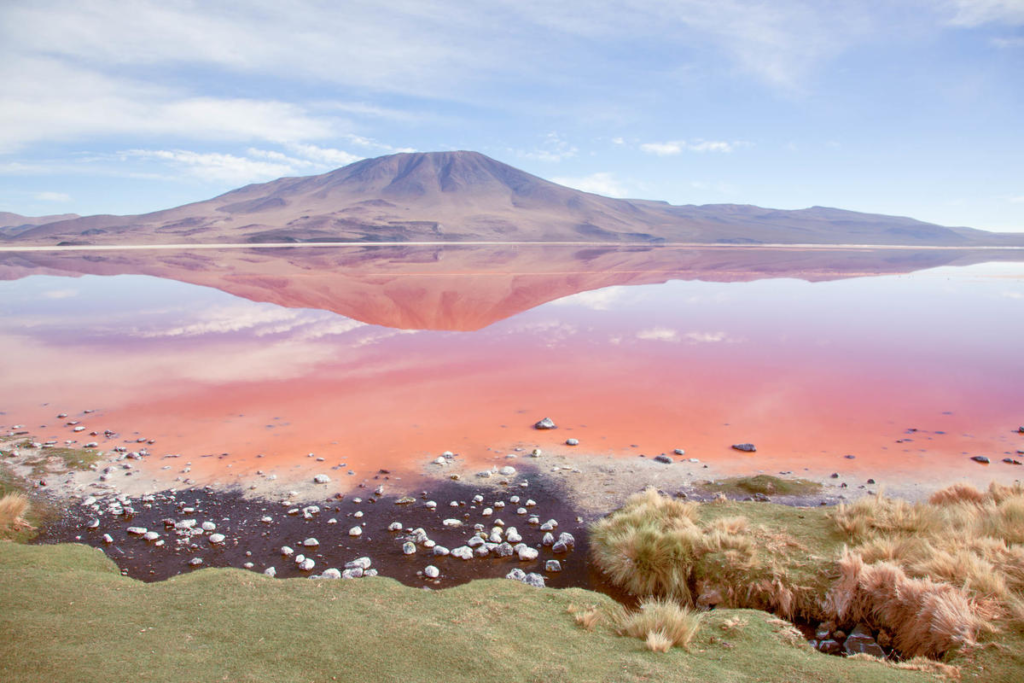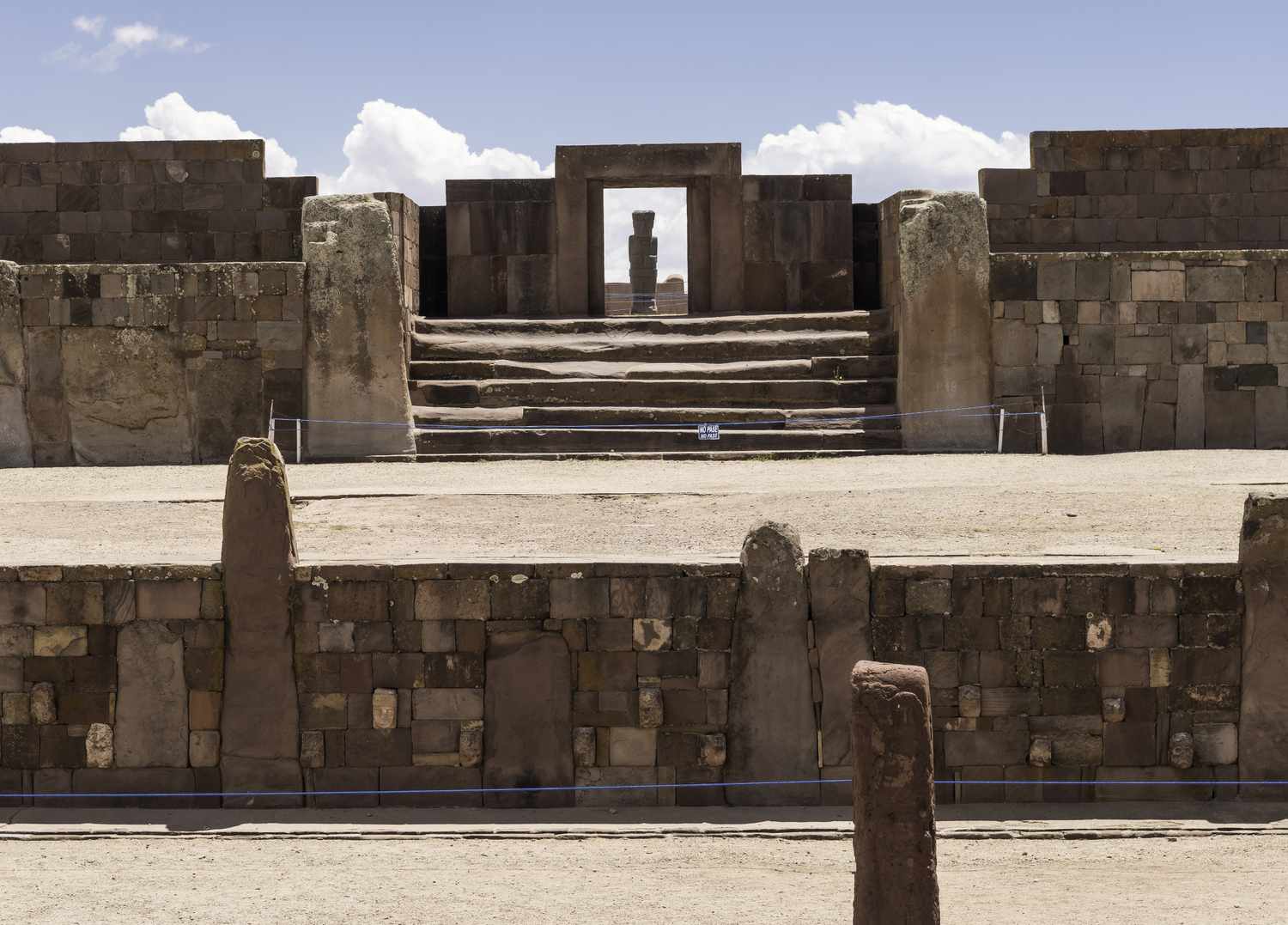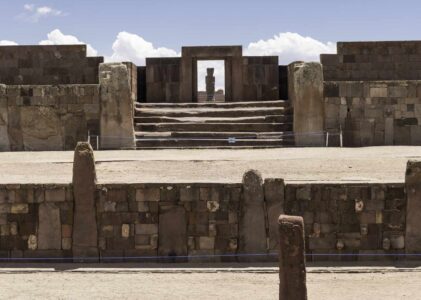Have you ever dreamed of combining your digital nomad lifestyle with a journey back in time to explore the ancient ruins of Tiwanaku, Bolivia? If so, you’re in for a treat! Tiwanaku is a destination like no other, captivating travelers with its rich history, breathtaking architecture, and vibrant culture. In this comprehensive guide, we’ll take you on a virtual journey through Tiwanaku, offering insights on when to visit, a full itinerary, transportation tips, accommodation options, where and what to eat, and even coworking opportunities nearby. So, fasten your seatbelts, because we’re about to embark on an unforgettable adventure.
1. Unveiling Tiwanaku: A Glimpse into the Past

Tiwanaku, often spelled as Tiahuanaco, is an ancient archaeological site located in the highlands of western Bolivia, near the southern shores of Lake Titicaca. This UNESCO World Heritage site is shrouded in mystery and has captivated the imagination of historians, archaeologists, and adventurers alike. But what makes Tiwanaku so special, and why has it become increasingly popular among digital nomads?
Why Tiwanaku Has Become So Popular
- Mystical Aura: Tiwanaku’s enigmatic stone structures, intricate carvings, and the colossal Akapana pyramid exude an otherworldly aura that beckons visitors to delve into its mysteries. The site is believed to have been the spiritual and cultural center of the Tiwanaku civilization, which thrived from 300 BCE to 1000 CE.
- Historical Significance: Tiwanaku is often regarded as the cradle of Andean civilization, predating the Inca Empire. Exploring the remnants of this once-great civilization allows travelers to connect with a distant past and appreciate the ingenuity of its architects and engineers.
- Cultural Immersion: Beyond its archaeological significance, Tiwanaku offers a glimpse into Bolivia’s indigenous culture. Visitors can witness traditional rituals, festivals, and artisanal crafts, providing a rich cultural experience.
- Adventure Awaits: For the adventurous digital nomad, Tiwanaku serves as a gateway to the Bolivian Altiplano, where you can explore the mesmerizing landscapes of the high plateau, interact with llama herders, and embark on thrilling treks.
Now that you’re enticed by the allure of Tiwanaku, let’s dive into the details of planning your visit.
2. When to Visit Tiwanaku

Choosing the right time to visit Tiwanaku is crucial for an enjoyable experience. The weather and crowd levels can significantly impact your journey. To make the most of your trip, consider the following:
- Dry Season: The best time to visit Tiwanaku is during the dry season, which typically runs from May to October. During this period, you’ll encounter clear skies and mild temperatures, making exploration comfortable and enjoyable.
- Avoid the Rainy Season: Bolivia’s rainy season, from November to March, can lead to muddy roads and limited visibility due to cloud cover. It’s advisable to steer clear of this period if you want to fully appreciate the site.
- Festivals: If you’re interested in immersing yourself in Bolivia’s vibrant culture, plan your visit to coincide with local festivals and events. One such event is the Festival of the Sun, held in Tiwanaku in June, celebrating the winter solstice with traditional dances and rituals.

3. Full Itinerary for Exploring Tiwanaku
To ensure you make the most of your Tiwanaku adventure, here’s a detailed itinerary that covers the must-see attractions and activities:
Day 1: Arrival and Orientation
- Morning: Arrive at El Alto International Airport in La Paz, Bolivia, and take a taxi or shuttle to your chosen accommodation near Tiwanaku.
- Afternoon: Explore the local surroundings, get accustomed to the altitude (Tiwanaku is at an elevation of over 12,000 feet), and enjoy a traditional Bolivian meal.
Day 2: Tiwanaku Archaeological Site
- Morning: Head to the Tiwanaku archaeological site, which opens at 9:00 AM. Begin your exploration with a guided tour to gain insights into the history and significance of the site.
- Afternoon: Visit the iconic Akapana pyramid, the Semi-Subterranean Temple, and the Sun Gate (Gateway of the Sun), famous for its intricate carvings. Take your time to appreciate the ancient architecture and the sense of wonder that permeates the area.
- Evening: Return to your accommodation, relax, and savor Bolivian cuisine at a local restaurant.

Day 3: Cultural Immersion
- Morning: Explore the nearby village of Tiwanaku and interact with the indigenous Aymara people. Visit local markets and workshops to witness traditional craftsmanship.
- Afternoon: Attend cultural demonstrations and rituals performed by Aymara locals. Learn about their way of life, beliefs, and customs.
- Evening: Reflect on your cultural experiences and enjoy a quiet evening in the peaceful surroundings.
Day 4: Adventure in the Altiplano
- Morning: Embark on a day trip to the Bolivian Altiplano, a high plateau renowned for its breathtaking landscapes. Visit the stunning Chullpas de Cutimbo, ancient burial towers, and enjoy a picnic amidst the surreal scenery.

- Afternoon: Explore the nearby village of Tiahuanaco and learn about its history and culture. Capture the mesmerizing landscapes with your camera.
- Evening: Return to Tiwanaku and relish a hearty meal before preparing for your departure.
4. How to Get There and How to Get Around
Reaching Tiwanaku is an adventure in itself, as the journey takes you through the stunning landscapes of Bolivia. Here’s how to get there and navigate the area:
Getting to Tiwanaku
- From La Paz: Most travelers arrive in La Paz, Bolivia’s capital. From there, you can take a taxi, bus, or hire a private driver for the 70-kilometer journey to Tiwanaku. The journey offers breathtaking views of the Andes Mountains and the altiplano.
- By Bus: Several bus companies operate services between La Paz and Tiwanaku. The journey takes around two hours, and buses depart regularly from the city’s main bus terminal.
- Private Transfer: For added convenience and comfort, consider booking a private transfer from La Paz to Tiwanaku. This option is particularly popular among digital nomads looking for a hassle-free journey.
Getting Around Tiwanaku
- On Foot: Tiwanaku itself is relatively compact and can be explored on foot. Wear comfortable shoes, as you’ll be walking on uneven terrain.
- Local Transportation: To explore the surrounding area, you can hire taxis or arrange for guided tours through your accommodation. Many locals also offer transportation services.
- Renting a Bike: Some accommodations offer bike rentals, allowing you to explore the nearby villages and scenic routes at your own pace.
5. Where to Stay in Tiwanaku
Tiwanaku offers a range of accommodation options catering to different budgets and preferences. Here are a few examples:
1. Tiwanaku Hostel: This budget-friendly option provides dormitory-style accommodation and a communal atmosphere. It’s perfect for backpackers and solo travelers.
2. Tiwanaku Boutique Hotel: For those seeking comfort and charm, boutique hotels in Tiwanaku offer cozy rooms, personalized service, and a taste of local culture.
3. Tiwanaku Eco-Lodge: If you’re an eco-conscious digital nomad, consider staying in an eco-lodge near Tiwanaku. These lodges prioritize sustainability and often offer unique experiences in natural surroundings.
4. Homestays: Experience Bolivian hospitality by staying with a local family. Homestays allow you to immerse yourself in the Aymara culture and enjoy homemade meals.
Remember to book your accommodation in advance, especially during the peak tourist season, to secure the best options.
6. Where and What to Eat
Exploring Tiwanaku’s culinary scene is an essential part of your journey. The region offers a variety of delicious dishes that will tantalize your taste buds. Here are some recommendations:
1. Local Fare: Sample traditional Aymara dishes such as “saice,” a spicy beef stew, and “papas a la huancaina,” potatoes in a creamy cheese sauce. These dishes showcase the flavors of the Andes.
2. Street Food: Tiwanaku’s streets are lined with food vendors offering empanadas, salteñas (savory pastries), and freshly squeezed fruit juices. Don’t miss the opportunity to try these local treats.
3. Restaurants: Explore the restaurants in Tiwanaku for a mix of international and Bolivian cuisine. Look out for llama steaks, quinoa-based dishes, and hearty soups.
4. Market Food: Visit the local markets to savor fresh, affordable meals prepared by local cooks. It’s a great way to support the community and enjoy authentic flavors.
7. Coworking Opportunities Near Tiwanaku
For digital nomads looking to balance work and exploration, finding coworking spaces near Tiwanaku is essential. While the town itself may not have dedicated coworking hubs, La Paz, which is a short drive away, offers several options:
1. Impact Hub La Paz: Located in the heart of La Paz, Impact Hub provides a vibrant coworking environment, networking opportunities, and essential amenities for remote workers.
2. Selina La Paz: Selina is a well-known chain of coworking and coliving spaces. In La Paz, you can access their coworking facilities and connect with fellow nomads.
3. Bolivia Coworking: This local coworking space in La Paz offers flexible membership options, high-speed internet, and a productive atmosphere.
While you explore Tiwanaku, you can schedule your workdays in La Paz, ensuring you stay productive during your visit.
Tiwanaku
Tiwanaku, Bolivia, offers a unique blend of history, culture, and adventure for digital nomads seeking an extraordinary experience. From exploring ancient archaeological sites to immersing yourself in indigenous culture and savoring delectable cuisine, Tiwanaku has it all. So, pack your bags, prepare your itinerary, and get ready to embark on a journey that will transport you through time and leave you with lasting memories of this remarkable destination.
With its mystical allure, Tiwanaku has become a must-visit destination for travelers seeking more than just a typical adventure. Plan your trip during the dry season, explore the archaeological wonders, indulge in local cuisine, and find coworking spaces in nearby La Paz to keep your digital nomad lifestyle on track. Tiwanaku is waiting to unveil its secrets to you, making it a once-in-a-lifetime experience that should not be missed.
Start your Tiwanaku adventure today and let the ancient mysteries of Bolivia unfold before your eyes!
Related Websites:

